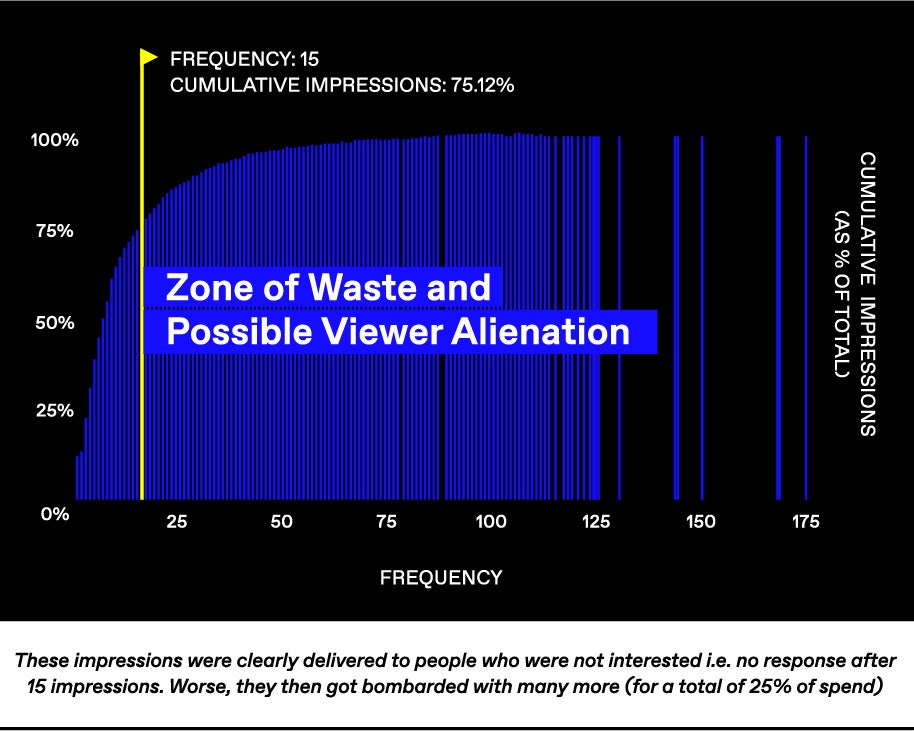This article is sponsored by Tatari.
OTT viewing is on the rise. Once considered a supplementary source of TV content, streaming now accounts for nearly 30% of viewing – and growing.
As publishers continue to move more of their content libraries to the advertising video on demand (AVOD) ecosystem, streaming ad impressions will become a powerful opportunity for marketers to reach new audiences at scale with more specificity than ever before.
The move to streaming does bring its own new set of challenges. In particular, delivery and measurement capabilities are not uniform from publisher to publisher – which can make it difficult to accurately assess campaign performance.
“It’s truly the Wild West of TV advertising,” said Philip Inghelbrecht, CEO at Tatari. “There are still a lot of missing pieces to figure out – not just the lack of measurement best practices, but also limitations around how streaming impressions are delivered.”
Here are four key metrics to monitor and safeguard the quality of impressions to drive more effective, efficient streaming campaigns.
- Ad Spacing and Capping. It’s an all too common scenario: A viewer sees an ad and then sees it again, and again, and again. Not only can this become a huge annoyance for the viewer, but it generates unnecessary ad waste that limits a marketer’s return on ad spend.
While most marketers know to beware of frequency capping problems, they may forget to track two related issues: ad spacing (time between impressions) and global capping (total ad views). These impressions tend to have diminished returns.
Yet, they continue to occur at an alarming rate. According to a study by Tatari, nearly 25% of all impressions are delivered to an individual who has seen the ad 15 or more times.

“It’s not that publishers are inherently evil,” Inghelbrecht said. “They may just not be technically set up to give proper limits for how many times an ad is seen within a given day or the correct spacing between ads.”
In order to define the right capping frequency and also ensure publisher adherence, marketers must prioritize publishers who provide access to impression-level IP data to monitor served ads in real time and limit low-impact impressions.
- Dayparting. In linear television, dayparting is a key ad-buy component. The rationale for this is simple: viewers are much more likely to tune-in and pay attention to television content during primetime than at any other time of day.
In the streaming world, some publishers claim that dayparting is a non-issue. They assert viewers who tune-in to streaming content have made a conscious decision and will therefore pay attention no matter the time of day. However, this isn’t entirely true.
“The data shows us that dayparting does matter,” said Mike Swinson, chief data scientist at Tatari. “It may not be primetime you need. For some, overnight works best – such as a mattress company. But for others, primetime impressions will be much more successful.”
As a result, marketers need to figure out which dayparts make the most sense for their brands. It’s also important to identify the right publisher partners – ones who offer control over daypart and can deliver the highest activation against selected timeframes.
- Device Delivery. When left up to publishers, streaming TV impressions are often disproportionately delivered to PC, mobile and tablet devices. This suggests that marketers who buy on remnant or open exchanges may be missing out on many of the best opportunities.
While mobile impressions are not necessarily a bad thing, they can create misleading results for marketers to navigate.
“If you aren’t careful, you might end up with a mobile-focused streaming campaign that appears to have a fantastic click-through rate,” Swinson said. “But when you look closer, you’ll notice you aren’t converting sales further down the funnel.”
This can be caused by any number of reasons – such as accidental taps on a mobile touchscreen. As a result, it’s a valuable reminder that full-funnel measurement is critical to understanding the nuances that influence campaign success. Tracking these actions and monitoring for click-through related issues helps ensure that campaigns are performing as intended – and when they aren’t, it may offer insights that can point marketers in the right direction.
- View-through vs. Incremental Measurement. Finally, when it comes to measuring the direct impact of ads on campaign performance, many marketers struggle to get an accurate picture – particularly when comparing the impact of streaming vs. other channels.
Traditionally, credit is allocated to TV via a baseline-plus-lift model. Any unexplained traffic above the baseline is attributed to TV. However, this fails to control for the impact other channels – such as social media, out of home and radio – may have had on the engagement.
“Incrementality is the key,” Inghelbrecht said. “You need to exclude the people who would have come anyway, or who may have been influenced by other channel campaigns, to gauge the real impact of television ad spend.”
This way, when you encounter under-performing TV ads, it may indicate your current publisher mix overlaps too closely with your existing brand audience. If new (or incremental) customers are the goal, moving to new publishers or additional channels may help achieve incremental reach.
As the OTT environment continues to work through growing pains, it is necessary for marketers to take a proactive approach – understanding the potential pitfalls and advocating for themselves when needed. The use of data and analytics is not limited to measurement; it plays an equal role in campaign delivery. In other words, measurement of campaign outcomes (e.g. cost per visitor) is only half; measuring delivery is the other half.













